
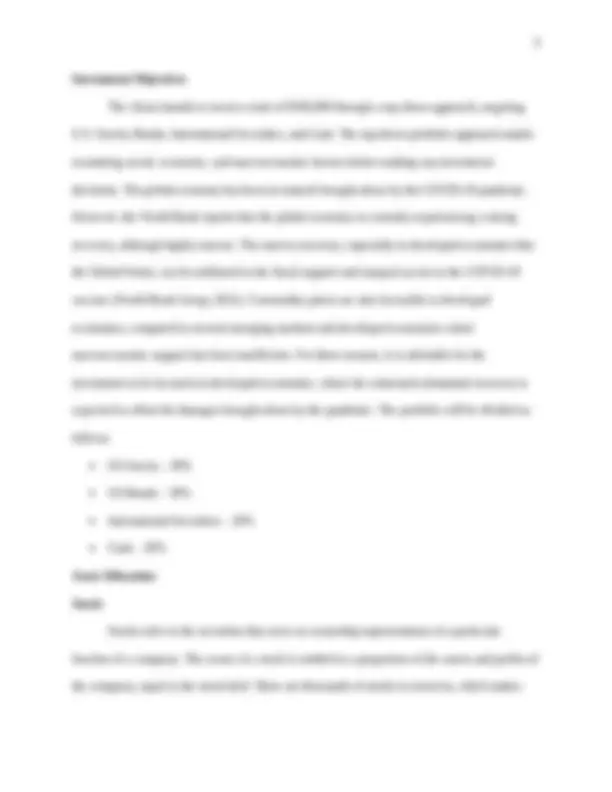
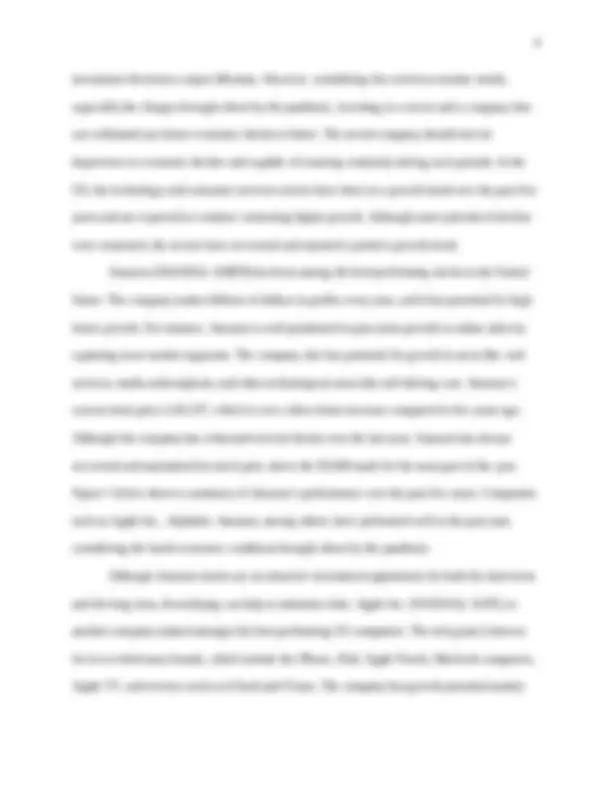
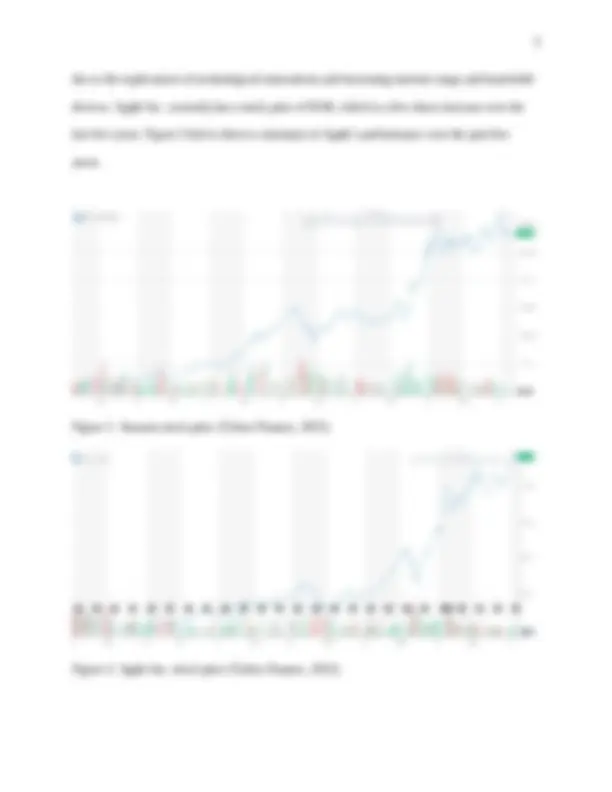
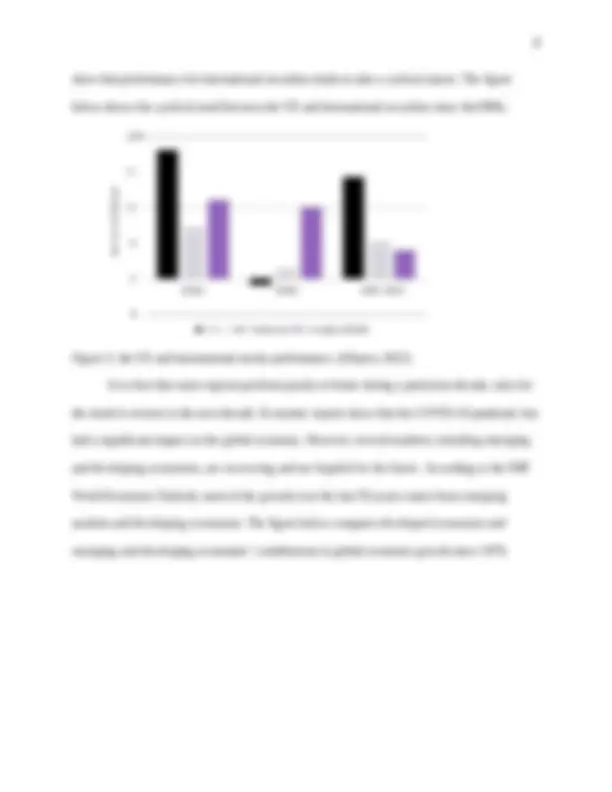
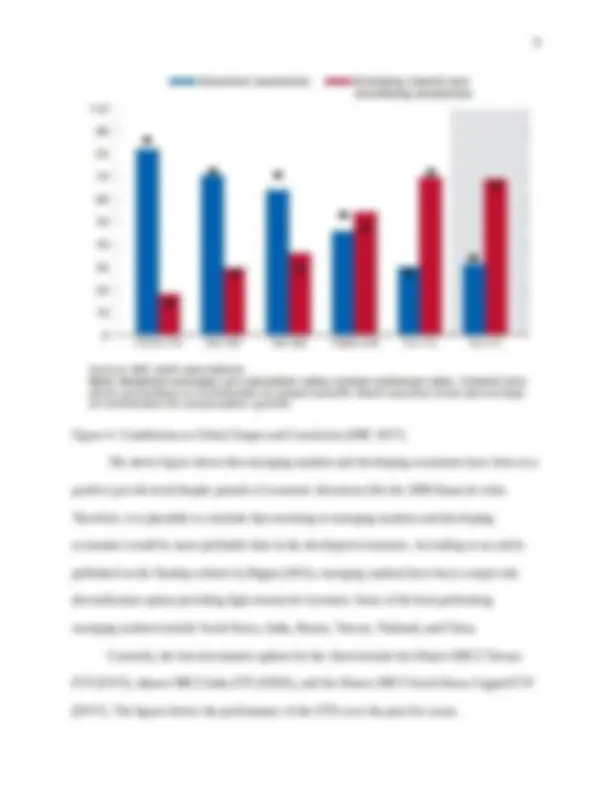
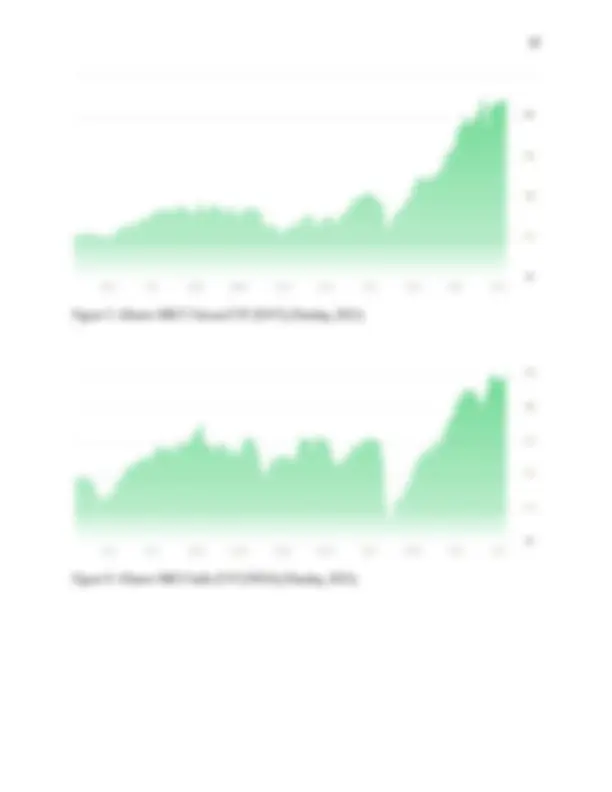
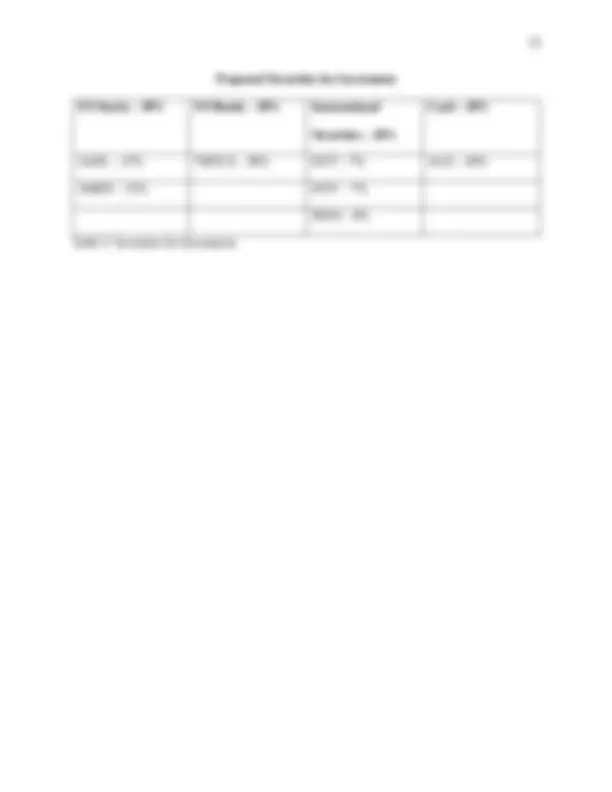
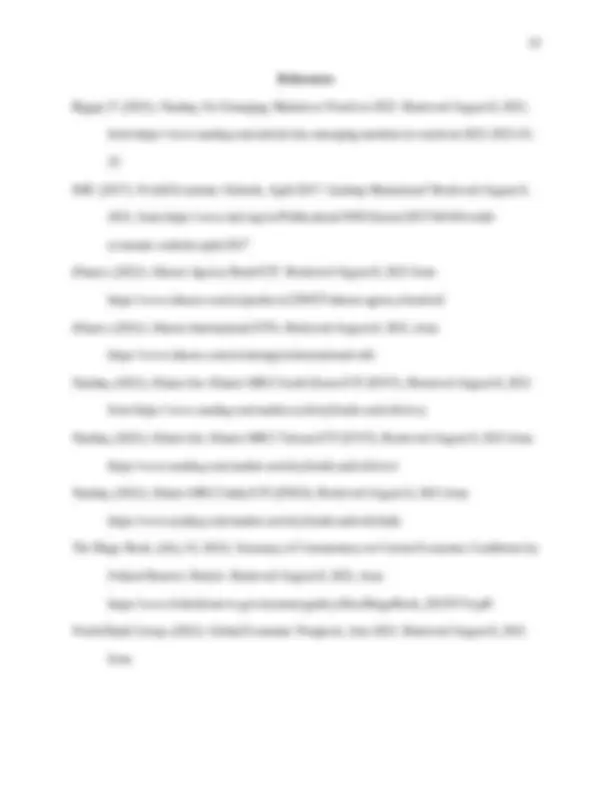



Study with the several resources on Docsity

Earn points by helping other students or get them with a premium plan


Prepare for your exams
Study with the several resources on Docsity

Earn points to download
Earn points by helping other students or get them with a premium plan
Community
Ask the community for help and clear up your study doubts
Discover the best universities in your country according to Docsity users
Free resources
Download our free guides on studying techniques, anxiety management strategies, and thesis advice from Docsity tutors
This paper covers strategies for building a resilient investment portfolio in the current economic climate, including navigating the ongoing recovery and diversifying your investments. Topics will include risk management, asset allocation, and identifying opportunities for growth.
Typology: Essays (university)
1 / 15

This page cannot be seen from the preview
Don't miss anything!










Portfolio Student’s Full Name Institution Affiliation Course Full Title Instructor’s Full Name Due Date
Portfolio Current Situation The COVID-19 pandemic has had disastrous effects on economies around the world. Since the advent of the pandemic, governments have implemented various measures to curb the spread of the virus. The implemented measures have led to a decline in economic growth as many businesses have been forced to shut down or implement structural changes to ensure continuity. Although the emerging and developing economies have suffered the most, developed economies like the United States (US) have also experienced the impacts of the pandemic. However, economic conditions are improving, especially after the introduction of the vaccine and the lifting of the measures implemented by governments. The US economy is currently on a recovery trend, with more economic growth expected to occur towards 2022. The Beige Book published in July 2021 shows that the US economy is currently on a growth trend. Some sectors that have reported robust growth include travel and tourism, transportation, non-financial services, and manufacturing (The Beige Book, 2021). Regarding employment level, three quarters of federal reserve districts reported a slight to modest increase, while a quarter reported strong job gains (The Beige Book, 2021). According to the Beige Book report, an above-average paced rise in prices was also reported, with pricing pressures mounting in the hospitality sector due to a limited supply of labor and materials. The United States also witnessed an increase in the real gross domestic product in the second quarter at a rate of 6. percent (Bureau of Economic Analysis, 2021). The GDP increase was an improvement from the first quarter, where a rise of 6.3 percent was recorded. According to the Bureau of Economic Analysis, the increase in real GDP during the second quarter resulted from economic recovery after lockdown measures were lifted in the US and COVID-19-related government response.
investment decisions a major dilemma. However, considering the current economic trends, especially the changes brought about by the pandemic, investing in a sector and a company that can withstand any future economic shocks is better. The sector/company should also be impervious to economic decline and capable of ensuring continuity during such periods. In the US, the technology and consumer services sectors have been on a growth trend over the past few years and are expected to continue witnessing higher growth. Although some periods of decline were witnessed, the sectors have recovered and reported a positive growth trend. Amazon (NASDAQ: AMZN) has been among the best-performing stocks in the United States. The company makes billions of dollars in profits every year, and it has potential for high future growth. For instance, Amazon is well-positioned to gain more growth in online sales by capturing more market segments. The company also has potential for growth in areas like web services, media subscriptions, and other technological areas like self-driving cars. Amazon’s current stock price is $3,337, which is over a three-times increase compared to five years ago. Although the company has witnessed several shocks over the last year, Amazon has always recovered and maintained its stock price above the $3,000 mark for the most part of the year. Figure 1 below shows a summary of Amazon’s performance over the past few years. Companies such as Apple Inc., Alphabet, Amazon, among others, have performed well in the past year, considering the harsh economic conditions brought about by the pandemic. Although Amazon stocks are an attractive investment opportunity for both the short term and the long term, diversifying can help to minimize risks. Apple Inc. (NASDAQ: AAPL) is another company ranked amongst the best performing US companies. The tech giant is known for its revolutionary brands, which include the iPhone, iPad, Apple Watch, Macbook computers, Apple TV, and services such as iCloud and iTunes. The company has growth potential mainly
due to the rapid nature of technological innovations and increasing internet usage and hand-held devices. Apple Inc. currently has a stock price of $146, which is a five-times increase over the last five years. Figure 2 below shows a summary of Apple’s performance over the past five years. Figure 1: Amazon stock price (Yahoo Finance, 2021) Figure 2: Apple Inc. stock price (Yahoo Finance, 2021)
previous year to $365 billion. Apple Inc. Shares continue to be a favorite for investors, as the company is projected to experience higher growth in the coming year. On the other hand, Amazon has revolutionized the consumer services sector and improved its revenue and stock prices over the years. Apart from brief periods of decline witnessed over the past year, Amazon has remained relentless through the pandemic and managed to report a high of 3,500 per share. AMZN is the best stock to invest in on a long-term basis, while AAPL is the more ideal for short-term investment. An equal investment of 15% on both stocks would help ensure that the client earns both in the short term and the long term. Bonds Also known as fixed income, bonds in the United States are expected to be on a recovery trend, mainly due to the aforementioned economic conditions. As the economy recovers and continues on a growth trend, bond market yields will increase as cash flow levels rise in the market. Some of the most promising areas of investment include high-quality fixed income, lower-quality high-yield bonds, securitized assets, convertible bonds, and emerging market debt. To maximize yield and minimize risk, a high-quality fixed income is the best option. Short- duration investments like the Vanguard Total Bond Market Index Fund (VBTLX) are short- duration investments; hence the risk that interest rates may rise over the long term is avoided. VBTLX is characterized by a trailing 12-month yield of 2.19%, a 5-year return of 3.57%, and an expense ratio of 0.05%. International Securities Investing in international securities is an important part of portfolio diversification, mainly because it allows the investor to avoid the risk associated with having all investments in the same country and gives room to capitalize on high-growth areas across the world. Reports
show that performance for international securities tends to take a cyclical nature. The figure below shows the cyclical trend between the US and international securities since the1990s. Figure 3: the US and international stocks performance. (iShares, 2021) It is clear that some regions perform poorly or better during a particular decade, only for the trend to reverse in the next decade. Economic reports show that the COVID-19 pandemic has had a significant impact on the global economy. However, several markets, including emerging and developing economies, are recovering and are hopeful for the future. According to the IMF World Economic Outlook, most of the growth over the last 50 years comes from emerging markets and developing economies. The figure below compares developed economies and emerging and developing economies’ contributions to global economic growth since 1976.
Figure 5: iShares MSCI Taiwan ETF (EWT) (Nasdaq, 2021) Figure 6: iShares MSCI India ETF (INDA) (Nasdaq, 2021).
Figure 7: iShares MSCI South Korea ETF (EWY) (Nasdaq, 2021). The table below shows a comparison of the ETFs’ key data: EWT INDA EWY Share Volume 488,280 210,896 530, 52 Week High/Low $65.58/$42.55 $46.02/$32.05 $96.30/$61. Market Cap 13,158,400,000 6,008,778,750 6,086,554, Expense Ratio 0.59% 0.69% 0.59% Table 2: ETFs Key Data (Nasdaq, 2021). The 20% allocated to international securities will be divided between the three ETFs as follows: EWT – 7% EWY – 7% INDA – 6% Cash There are several options available for cash investment. However, current economic conditions are plagued with uncertainties attributed to the COVID-19 pandemic. Therefore, an
Proposed Securities for Investment US Stocks – 30% US Bonds – 30% International Securities – 20% Cash – 20% AAPL – 15% VBTLX – 30% EWT – 7% AGZ – 20% AMZN – 15% EWY – 7% INDA – 6% Table 3: Securities for Investment
References Bajpai, P. (2021). Nasdaq: Six Emerging Markets to Watch in 2021. Retrieved August 8, 2021, from https://www.nasdaq.com/articles/six-emerging-markets-to-watch-in-2021-2021-01- 22 IMF. (2017). World Economic Outlook, April 2017: Gaining Momentum? Retrieved August 8, 2021, from https://www.imf.org/en/Publications/WEO/Issues/2017/04/04/world- economic-outlook-april- iShares. (2021). iShares Agency Bond ETF. Retrieved August 8, 2021 from https://www.ishares.com/us/products/239457/ishares-agency-bond-etf iShares. (2021). iShares International ETFs. Retrieved August 8, 2021, from https://www.ishares.com/us/strategies/international-etfs Nasdaq. (2021). iShares Inc iShares MSCI South Korea ETF (EWY). Retrieved August 8, 2021 from https://www.nasdaq.com/market-activity/funds-and-etfs/ewy Nasdaq. (2021). iShares Inc iShares MSCI Taiwan ETF (EWT). Retrieved August 8, 2021 from https://www.nasdaq.com/market-activity/funds-and-etfs/ewt Nasdaq. (2021). iShares MSCI India ETF (INDA). Retrieved August 8, 2021 from https://www.nasdaq.com/market-activity/funds-and-etfs/inda The Biege Book. (July 14, 2021). Summary of Commentary on Current Economic Conditions by Federal Reserve District. Retrieved August 8, 2021, from https://www.federalreserve.gov/monetarypolicy/files/BeigeBook_20210714.pdf World Bank Group. (2021). Global Economic Prospects, June 2021. Retrieved August 8, 2021 from